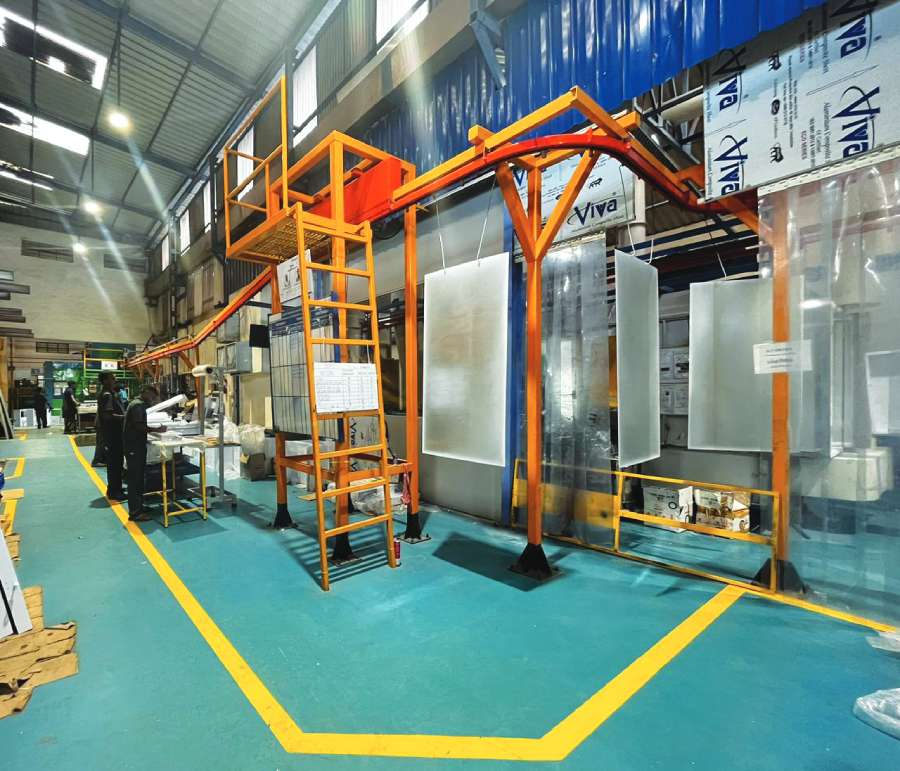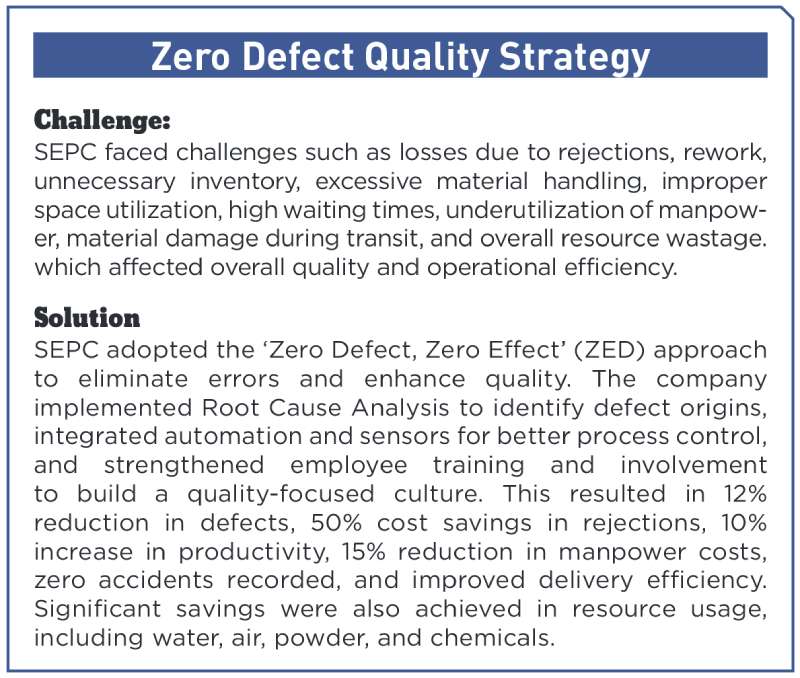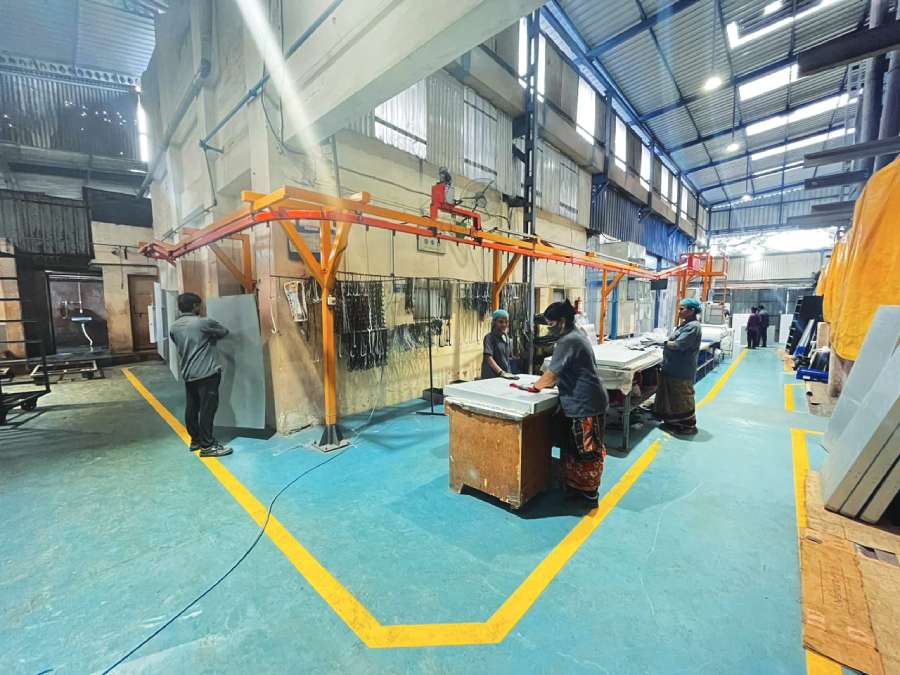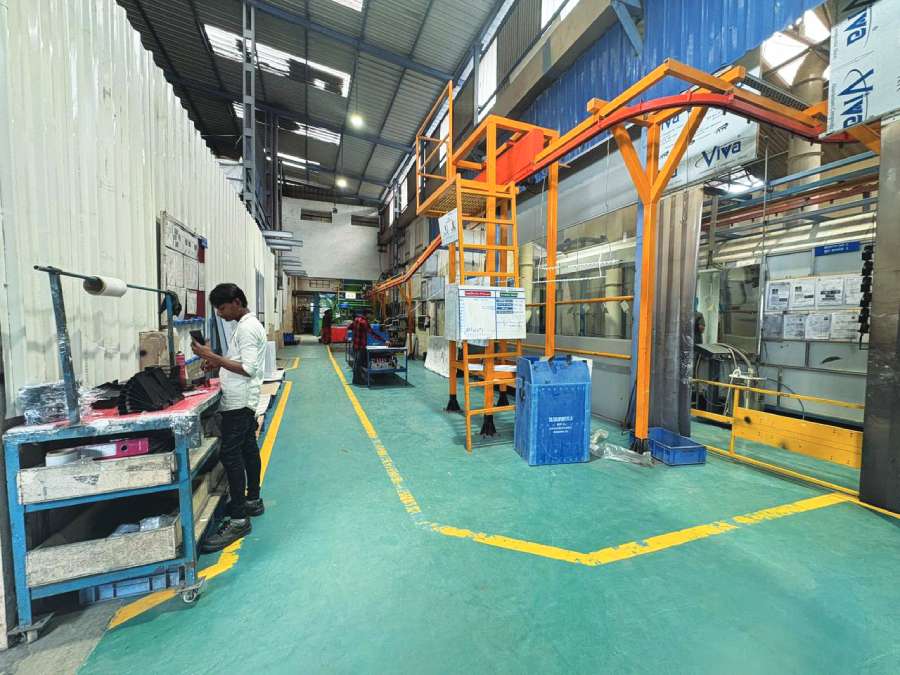TOWARD ZERO DEFECT QUALITY

In its journey towards excellence, Synergy Engineers & Powder Coaters, a Satara-based SME specializing in powder coating, implemented a Zero Defect Approach in its powder coating processes and achieved highly coveted results.
Synergy Engineers & Powder Coaters (SEPC) specializes in powder coating (a process that gives a durable and high-quality finish to metal products). Started in 1989 by Shirish Khutale, who previously worked at Maharashtra Scooters, the company began as a small manual powder coating unit and has now grown into one of India's largest fully automated powder coating facilities.
Milestones That Set the Tone
SEPC had the first mover advantage; it was the first independent powder coating service provider in Satara, which helped it attract major customers. The company started working with major clients including Godrej & Boyce in 1996, leading to collaborations with multiple divisions of Godrej. The ISO Certification in 2003 helped SEPC stand out from smaller, unorganized competitors. In 2010, it joined a Lean Manufacturing Cluster to improve efficiency and reduce waste. A visit to Japan in 2014 further reinforced its commitment to Lean principles.
Zero Defect, Zero Effect (ZED) Approach
‘Out of Quality, Out of Business’ serves as a constant reminder of the critical importance of quality to any organization. In today’s competitive landscape, sustaining growth requires placing quality at the core of the organization.
At SEPC, the focus has been on advancing quality objectives through active participation in various cluster activities. A significant collaboration took place in 2019 between CII and Godrej Interio Division, which proved highly beneficial in implementing the Zero Defect, Zero Effect (ZED) approach in the manufacturing processes on the shop floor.
The Journey of Improvement

The journey began with a comprehensive approach to identify and address key issues, followed by a series of structured steps designed to achieve operational excellence. The process included the following phases:
Problem Identification: The key challenges identified included losses due to rejections, rework, unnecessary inventory, excessive material handling, improper space utilization, high waiting times, underutilization of manpower, material damage during transit, and overall resource wastage. These issues were thoroughly traced and documented to understand the root causes and their impact.
Preparing a Milestone Chart: A detailed milestone chart was created, with each task broken down into actionable steps, accompanied by timelines to ensure timely execution and progress tracking.
Team Creation: A cross-functional team was formed, comprising members from senior management to shop floor technicians. This collaborative group took the lead in driving the initiative, ensuring that all aspects of the process were carefully managed and executed.
Data Collection and Analysis: A comprehensive assessment identified both active and dormant defects within the plant, evaluating their impact on rejection rates, rework frequencies, and Cost of Poor Quality (COPQ). A detailed analysis of customer complaints and emerging trends quantified the financial and operational repercussions of these defects. Additionally, a defect directory manual was created, mapping defects through the five senses. Defects at each stage of the powder coating process were traced and documented. Common issues, such as peeling, insufficient powder application, oil, and watermarks, resulted in order shortages and operational inefficiencies. This analysis facilitated the development of targeted corrective actions.
| Defects at each stage of the powder coating process were traced and documented. Common issues, such as peeling, insufficient powder application, oil, and watermarks, resulted in order shortages and operational inefficiencies. |

Root Cause Analysis: A detailed root cause analysis was conducted to identify the underlying factors contributing to the issues, ensuring a focused and targeted approach to their resolution. The ‘WAR-ROOM’ served as the central hub where all live defects were reviewed, and root cause analysis was performed to mitigate and eliminate them. Daily discussions encompassed key data points, including: * Customer complaints * In-process rejections * Quality alert indicators * Debit notes * Defect Traveling Trend Chart (TTC) * Actions taken and Poka-Yoke implementation * Quality performance reports, and * End of Line (EOL) inspection reports

This collaborative and systematic approach enabled the timely identification of issues and the implementation of corrective actions to improve overall quality.
Action Plan and Implementation: Based on the detailed analysis, an action plan was formulated with specific steps to address each identified issue. The plan incorporated a range of techniques to ensure effective resolution, including: * Accept-Generate-Inspect-Pass (AGIP) * DRVME (Defect, Reason, Validate, Measure, and Eliminate) * Operation Stream Mapping * OPCZ (Operation Process Chart for ZED) * CTQ (Critical to Quality) * CTC (Critical to Cost).
In addition, abnormality mapping was conducted throughout the plant using the 5 Sense concept (Hear, See, Smell, Touch, and Feel) tailored to each operation. This approach uncovered not only minor but also micro-level abnormalities, all of which were systematically addressed to improve process efficiency and quality. Furthermore, in-house subject matter experts convened to develop a list of Poka-Yoke solutions for key areas, including the Pre-Treatment Line, Conveyor, Oven, and Powder Coating Booth, further strengthening process reliability and error-proofing.
Several key upgrades were implemented across various stages of production. These included:
- Interlocks and Sensors installed on the Pre-Treatment Line to monitor and control temperature and liquid levels, ensuring optimal process conditions.
- An Advanced Conveyorized Powder Recovery System and Static Charge Elimination were integrated into the Powder Coating Line to enhance material handling and improve coating quality.
- Resource Management Systems, including FIFO (First-In-First-Out), were introduced to streamline inventory flow and minimize waste.
- Comprehensive Environmental and Safety Enhancements were made across the shop floors, reinforcing adherence to industry safety standards and improving overall work conditions.
Results
These strategic installations contributed to increased operational reliability, process optimization, and a safer, more efficient production environment. The project had a duration of 10 months, with a budget of INR 1.5 lakh and an expected return on investment (ROI) of 1.8 years.
Post-implementation, defects were eliminated, human error reduced, and product quality enhanced. Manpower utilization was optimized, leading to a 10 percent productivity increase, a 12 percent reduction in rejection, and a 50 percent decrease in rejection costs. Manpower costs were reduced by 15 percent, while OTIF and JIT ratings improved, and zero accidents were reported. Significant savings were also achieved in resource usage, including water, air, powder, and chemicals.
|
SEPC proudly became the first Small and Medium Enterprise (SME) in India to receive the prestigious GreenCo Platinum rating in 2016, a testament to its unwavering commitment to sustainable and eco-friendly manufacturing practices. |
Standardization: Best practices were standardized to ensure consistent and sustainable improvements across all processes.
Horizontal Deployment: Proven practices were extended across other departments and processes to further enhance operational efficiency and reinforce a culture of Zero Defect Quality.
Future Plans
The company’s future plans include the establishment of a fully automated Transporter System for the pre-treatment plant, designed to eliminate the manual dipping process. This upgrade aims to streamline operations, enhance consistency, and significantly improve overall efficiency by integrating automated systems that ensure precise control over every stage of the pre-treatment process. The transition to a fully automated system will also reduce labor dependency, minimize human error, and optimize resource utilization, further aligning with our goals for process improvement and operational excellence.
|
Further reinforcing its dedication to environmental stewardship, SEPC recently invested INR 20 lakh in the establishment of a Zero Liquid Discharge (ZLD) unit at its plant. |
Going Green and Beyond
SEPC proudly became the first Small and Medium Enterprise (SME) in India to receive the prestigious GreenCo Platinum rating in 2016, a testament to its unwavering commitment to sustainable and eco-friendly manufacturing practices.
Further reinforcing its dedication to environmental stewardship, SEPC recently invested INR 20 lakh in the establishment of a Zero Liquid Discharge (ZLD) unit at its plant. This advanced system ensures that all wastewater generated during the manufacturing process is treated and recycled, with no discharge into the environment. This strategic investment underscores SEPC’s ongoing efforts to minimize its ecological footprint, conserve water resources, and strengthen its vision of green manufacturing—a core pillar of its long-term sustainability goals.
 |
Aditya Khutale Director Synergy Engineers & Powder Coaters |




 Facebook
Facebook.png) Twitter
Twitter Linkedin
Linkedin Subscribe
Subscribe